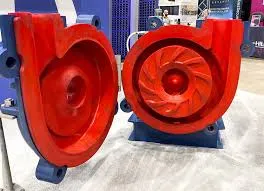Italian
- Afrikaans
- Albanian
- Amharic
- Arabic
- Armenian
- Azerbaijani
- Basque
- Belarusian
- Bengali
- Bosnian
- Bulgarian
- Catalan
- Cebuano
- Corsican
- Croatian
- Czech
- Danish
- Dutch
- English
- Esperanto
- Estonian
- Finnish
- French
- Frisian
- Galician
- Georgian
- German
- Greek
- Gujarati
- Haitian Creole
- hausa
- hawaiian
- Hebrew
- Hindi
- Miao
- Hungarian
- Icelandic
- igbo
- Indonesian
- irish
- Italian
- Japanese
- Javanese
- Kannada
- kazakh
- Khmer
- Rwandese
- Korean
- Kurdish
- Kyrgyz
- Lao
- Latin
- Latvian
- Lithuanian
- Luxembourgish
- Macedonian
- Malgashi
- Malay
- Malayalam
- Maltese
- Maori
- Marathi
- Mongolian
- Myanmar
- Nepali
- Norwegian
- Norwegian
- Occitan
- Pashto
- Persian
- Polish
- Portuguese
- Punjabi
- Romanian
- Russian
- Samoan
- Scottish Gaelic
- Serbian
- Sesotho
- Shona
- Sindhi
- Sinhala
- Slovak
- Slovenian
- Somali
- Spanish
- Sundanese
- Swahili
- Swedish
- Tagalog
- Tajik
- Tamil
- Tatar
- Telugu
- Thai
- Turkish
- Turkmen
- Ukrainian
- Urdu
- Uighur
- Uzbek
- Vietnamese
- Welsh
- Bantu
- Yiddish
- Yoruba
- Zulu
Telephone: +86 13120555503
Email: frank@cypump.com
Set . 05, 2024 05:58 Back to list
Types of Slurry Pumps - Comprehensive Guide
Types of Slurry Pumps
Slurry pumps play a crucial role in various industries where the transport of abrasive, viscous, or heavy mixtures is required. These pumps are specifically designed to handle slurries, which are combinations of liquids and solids. Different types of slurry pumps are available, each serving specific applications and conditions. Understanding these types is essential for selecting the right pump for your needs.
1. Centrifugal Slurry Pumps Centrifugal slurry pumps are the most common type. They use a rotating impeller to move the slurry through the pump casing. The design of these pumps allows for high flow rates and the ability to handle various slurry densities. They are widely used in mining and mineral processing, where large quantities of slurry need to be transported over long distances. Centrifugal pumps are ideal for handling slurry with lower solid concentrations.
2. Positive Displacement Slurry Pumps Unlike centrifugal pumps, positive displacement (PD) pumps move the slurry by trapping a fixed amount and forcing it through the discharge. This type is suitable for thick, viscous slurries and offers a consistent flow rate regardless of pressure changes. PD pumps are particularly useful in applications such as wastewater treatment and chemical processing, where the slurry can contain solids of various sizes and textures.
types of slurry pumps

3. Submersible Slurry Pumps Submersible slurry pumps are designed to operate while submerged in the slurry. They are often used in applications like dewatering, where groundwater and sediment need to be removed. These pumps are highly efficient and can handle a wide range of solids. Being submerged also helps with noise reduction and minimizes the risk of cavitation.
4. Air-Driven Slurry Pumps Air-driven slurry pumps utilize compressed air as their working mechanism. These pumps are lightweight, portable, and ideal for remote locations where electrical power may not be available. They are commonly used in construction sites for transferring concrete slurries and other heavy mixtures.
In conclusion, selecting the appropriate slurry pump depends on the specific requirements of your project. Consider factors such as the type of slurry, the required flow rate, and the conditions in which the pump will operate. By understanding the various types of slurry pumps available, you can make an informed decision that maximizes efficiency and effectiveness in your operations.
-
Custom Drilling Mud and Slurry Pump Supplier - High Efficiency, Tailored Solutions
NewsJun.10,2025
-
Supply Vertical Submersible Sewage Pump High-Efficiency WQ/QW Pumps Supplier
NewsJun.10,2025
-
Premium Sewage Ejection System & Pumps Efficient Waste Removal
NewsJun.09,2025
-
Premium Wholesale Slurry Pump Impellers Durable & Efficient Slurry Handling
NewsJun.09,2025
-
Top Sewage Pump Companies Durable Industrial Solutions for Efficiency
NewsJun.09,2025
-
Heavy Duty Slurry Pumps - OEM High Performance & Bulk Wholesale
NewsJun.09,2025










